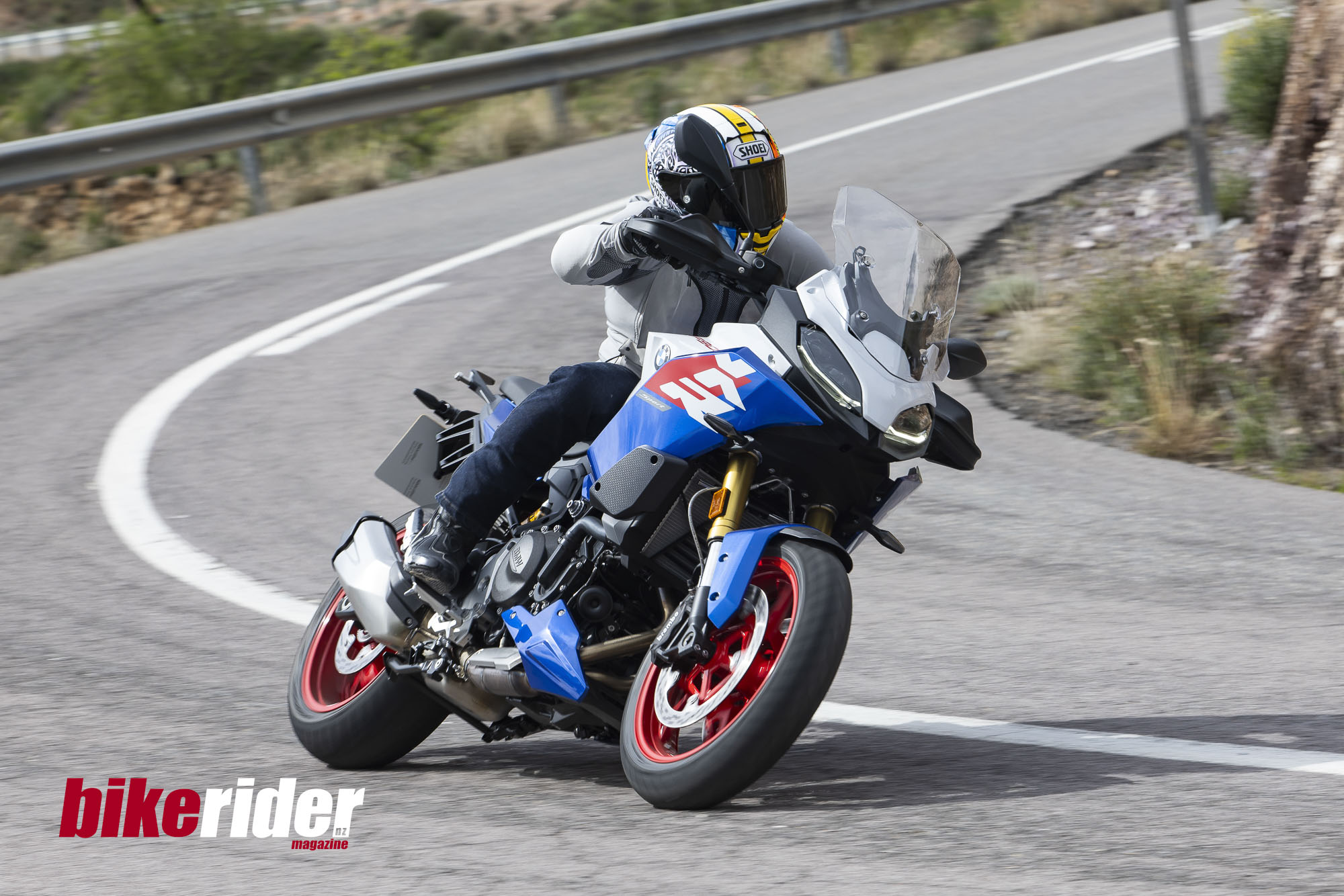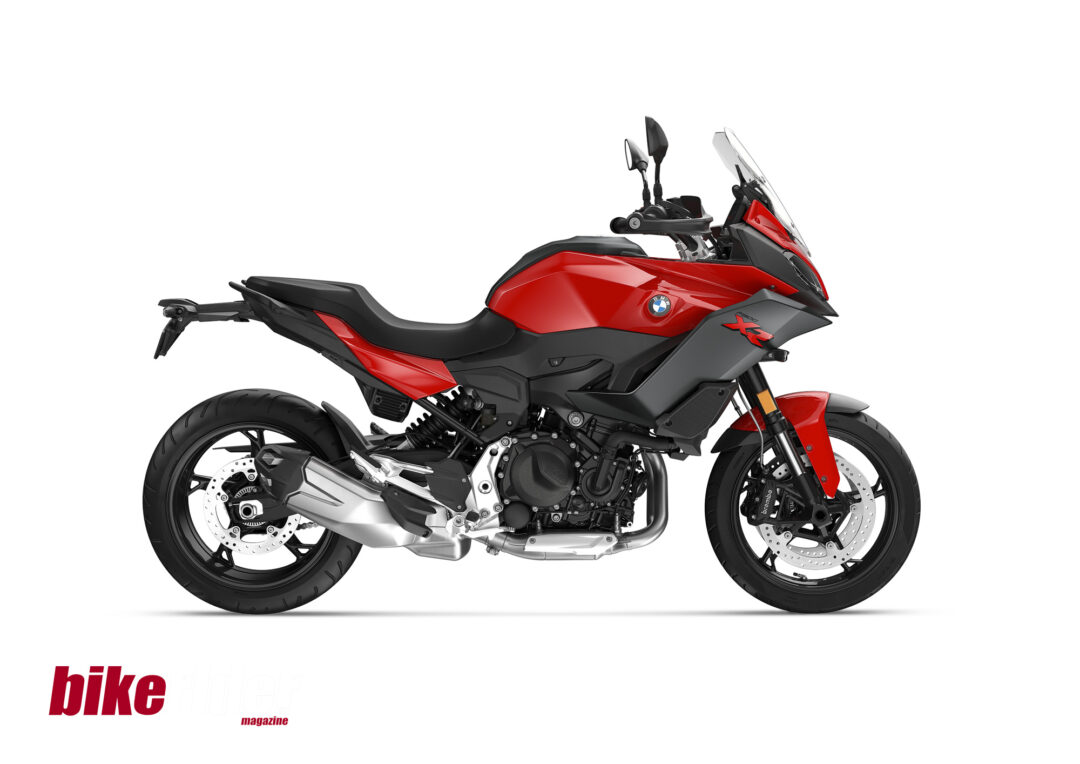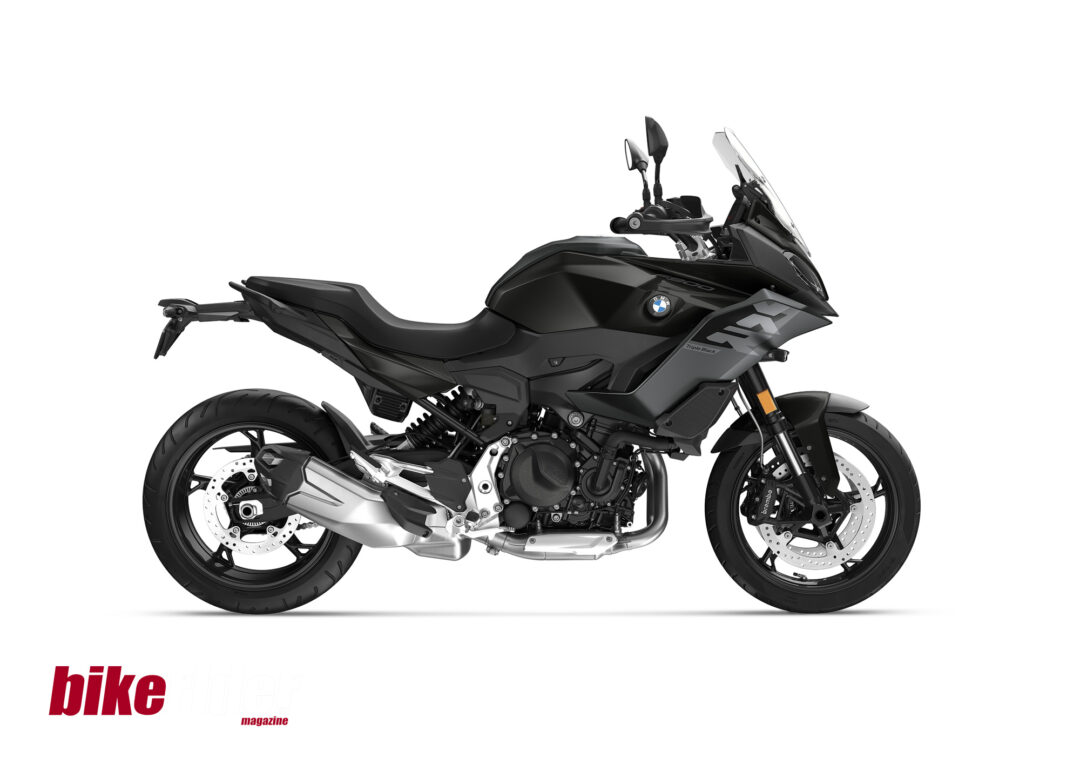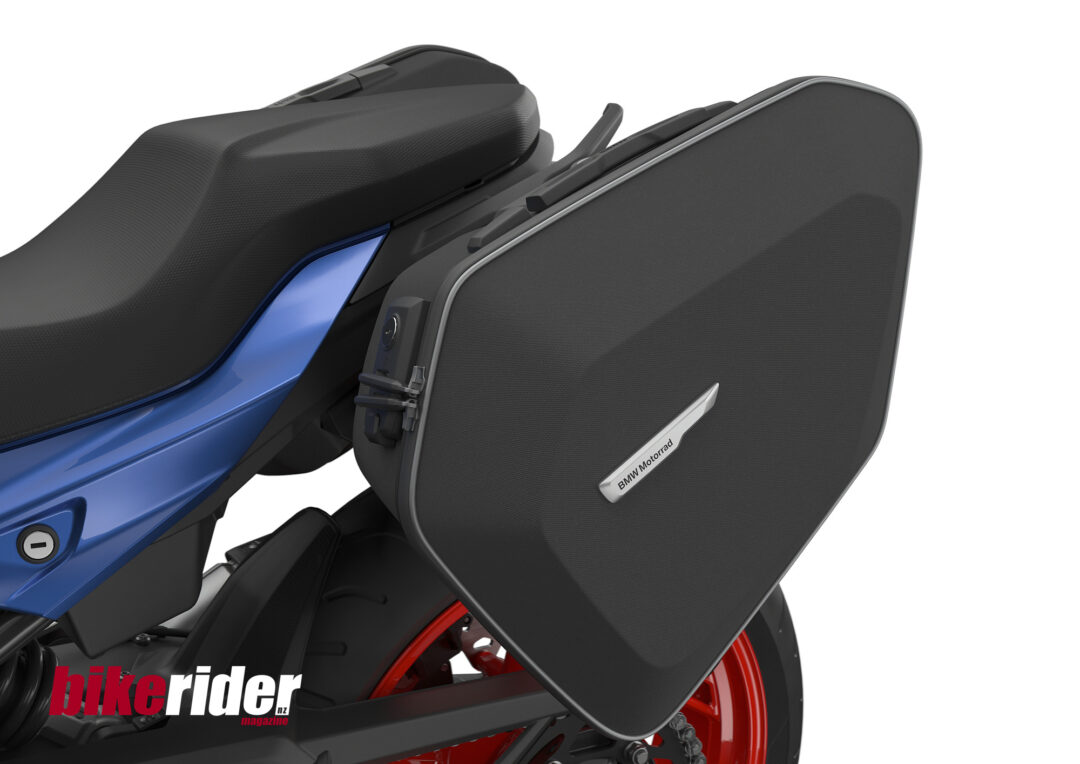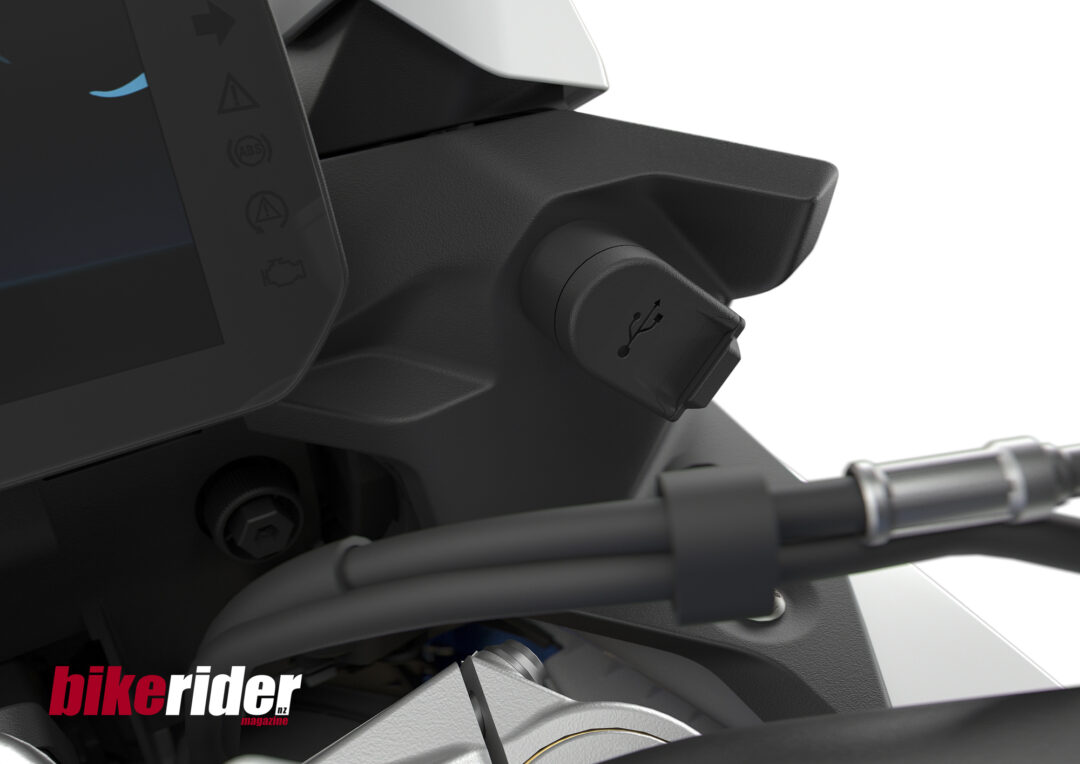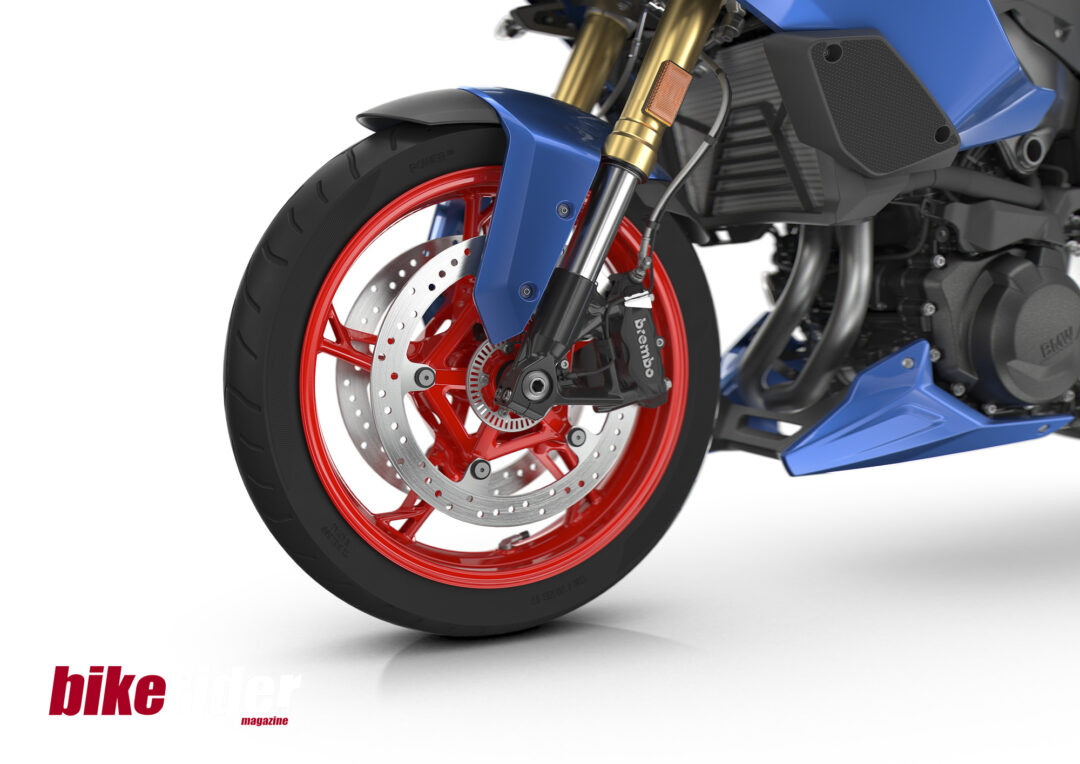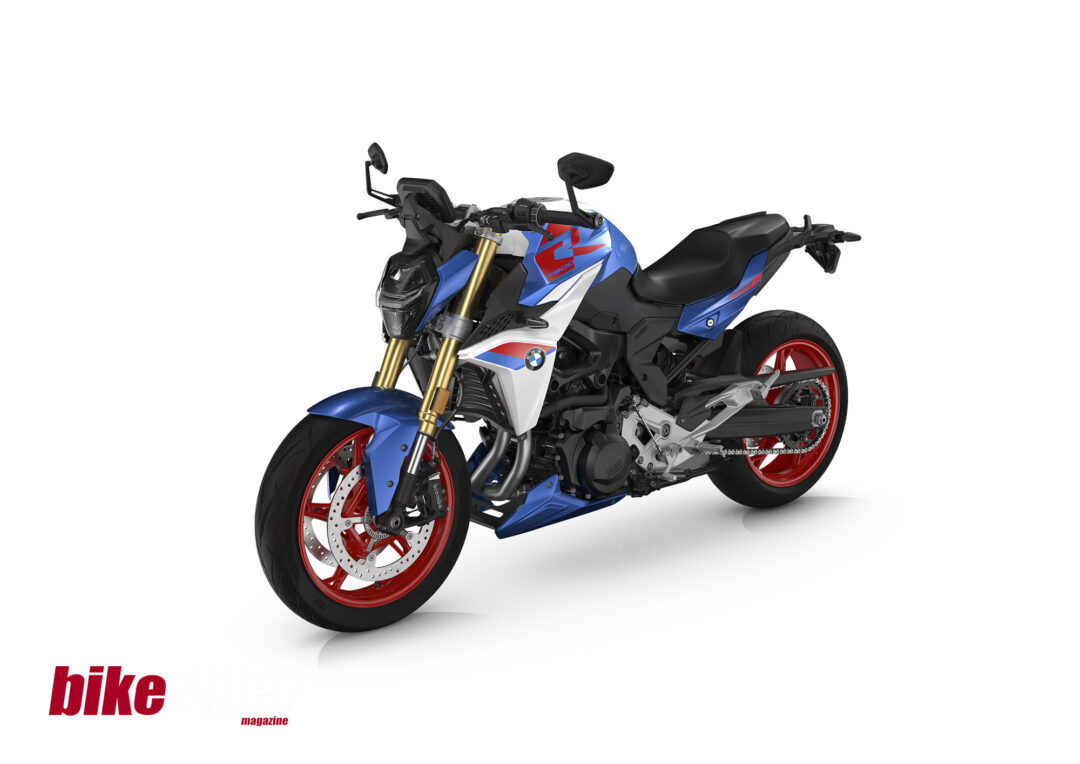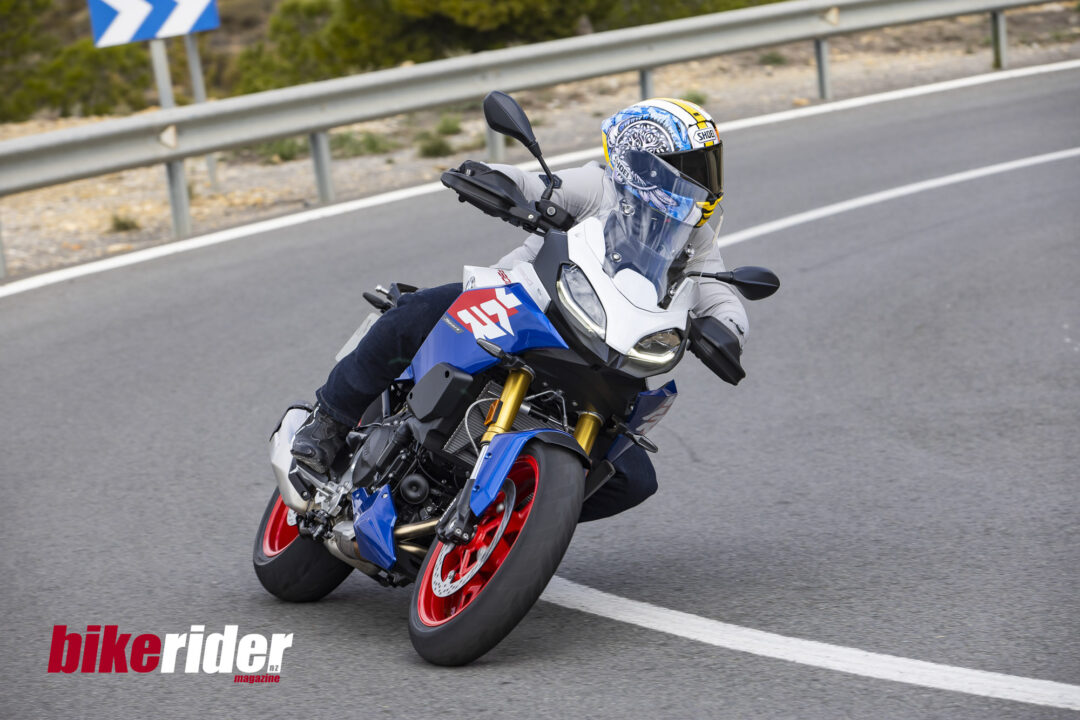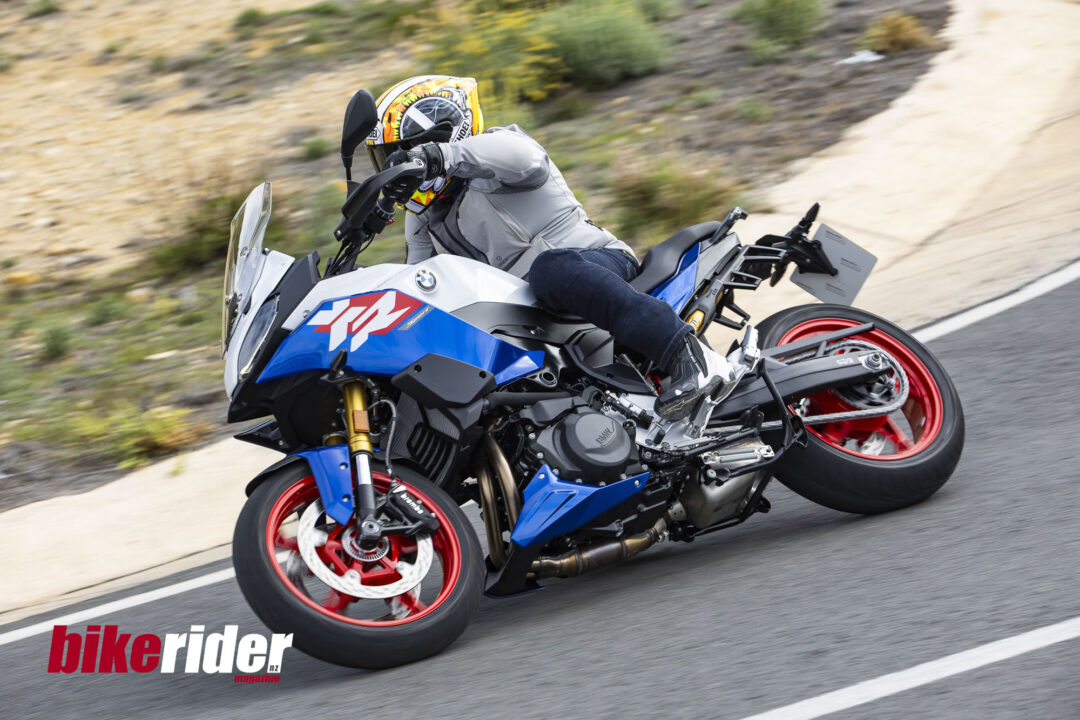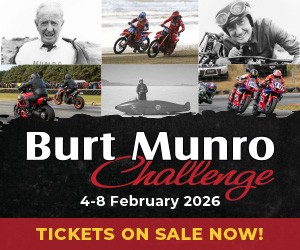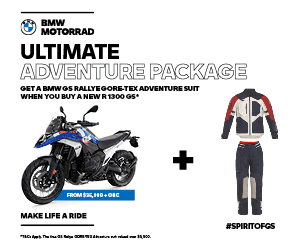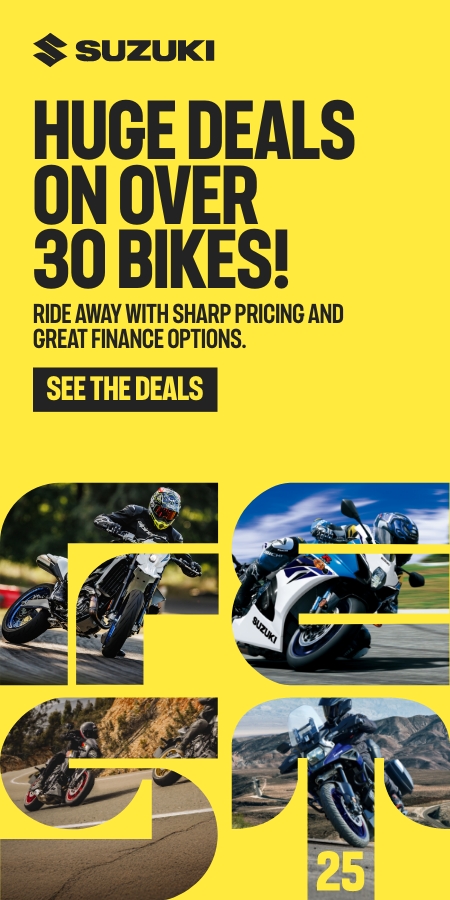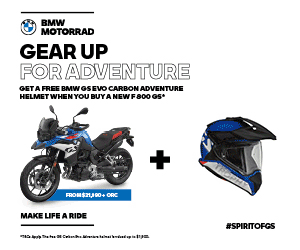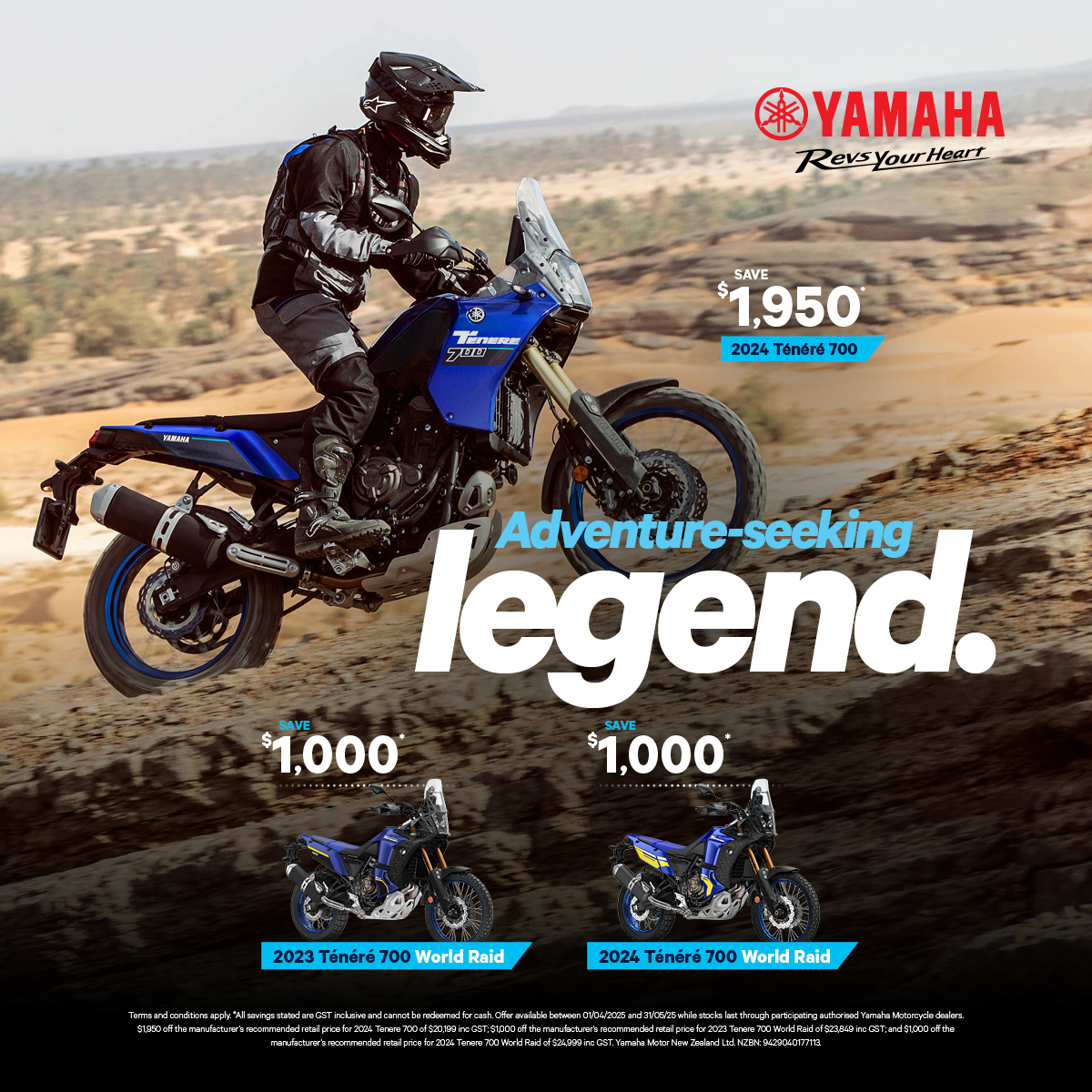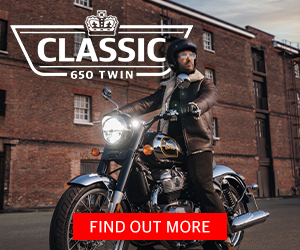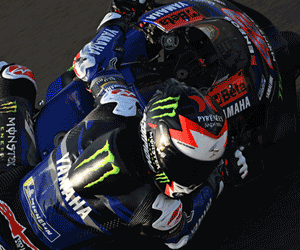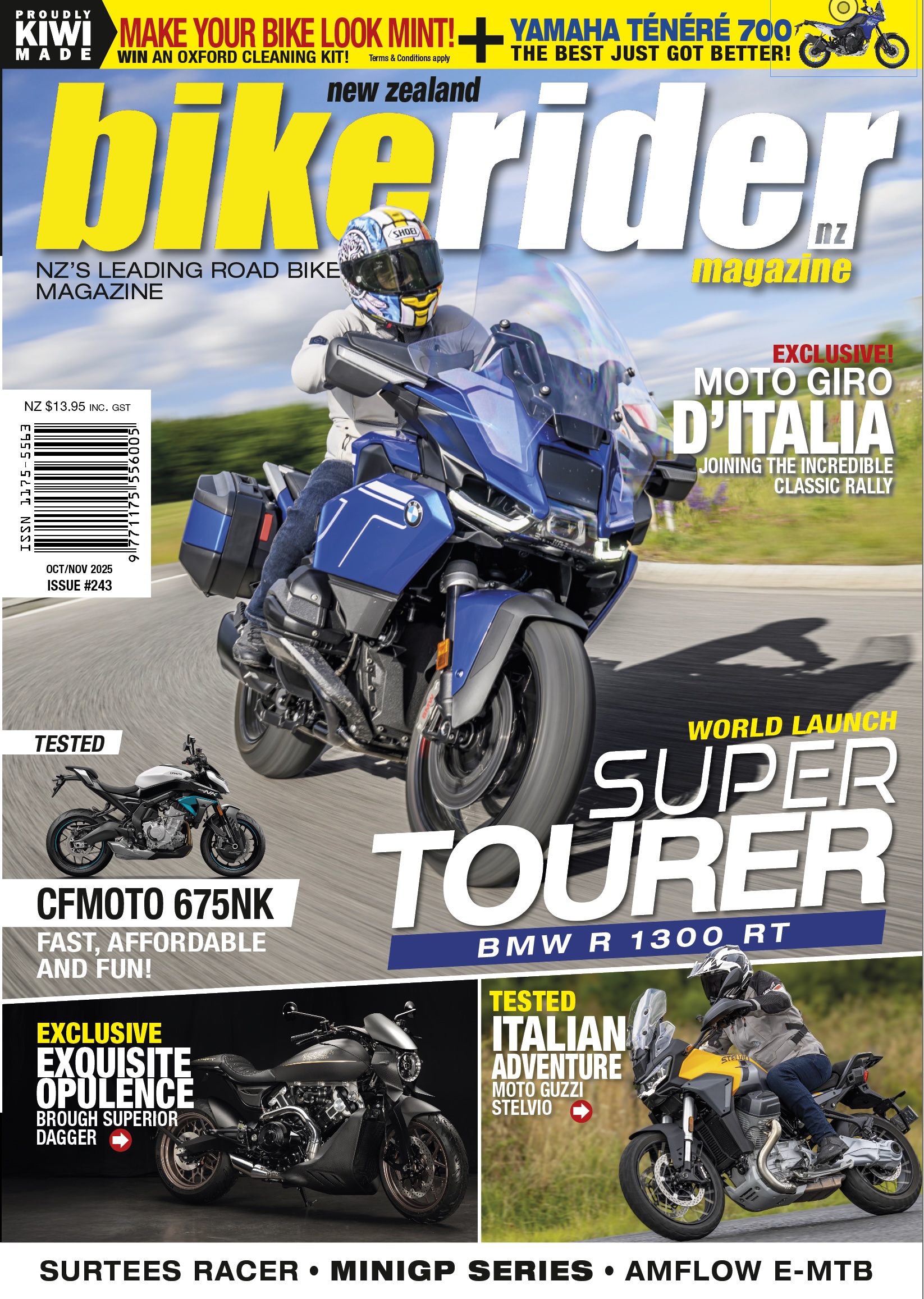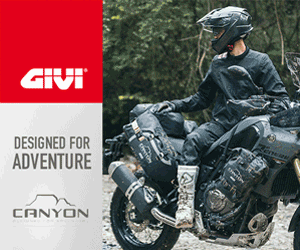- Both models lose weight and gain improvements in handling and comfort.
- R model is order-only for NZ. XR is due in showrooms later this year.
- 895cc parallel twin is now Euro5+ but no performance improvements.
Words: Adam Child Pics: BMW
BMW Motorrad has updated its popular F900R naked bike and F900XR sports-tourer for 2025. Both middleweight twins share the same 895cc parallel-twin engine and chassis, but each now features key upgrades designed to improve handling, comfort, and rider engagement. While we got to ride both models on the international launch, you’ll only find the XR in NZ dealers, with the R only available via pre-order.
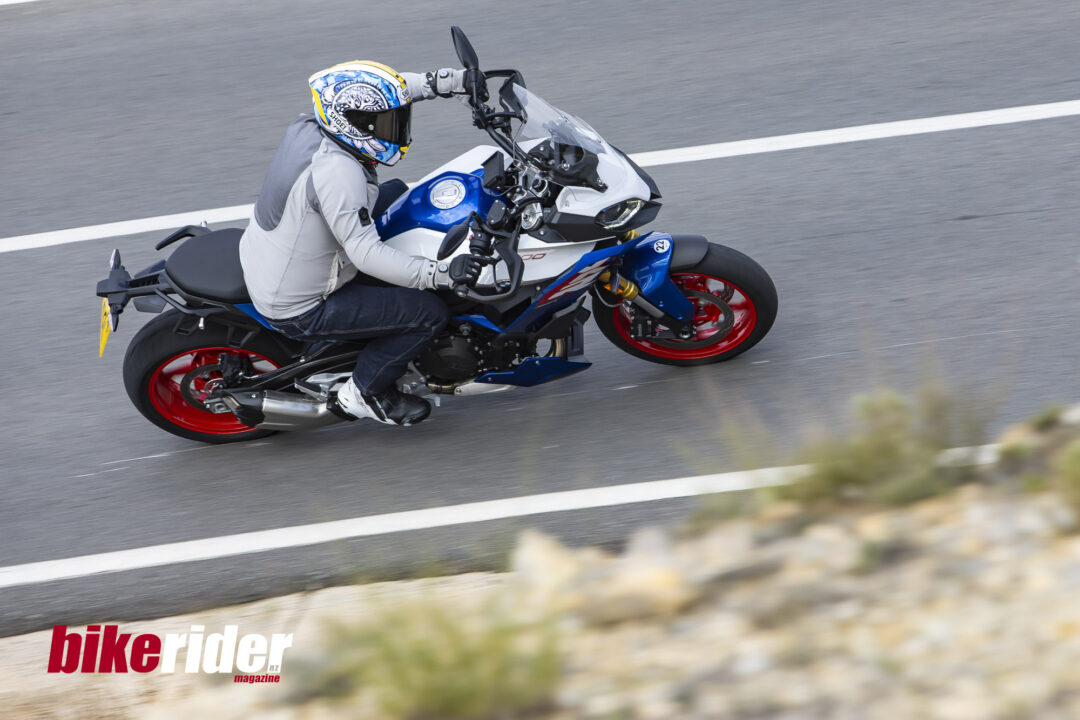
While the F900R plays the role of an aggressive naked roadster and the F900XR leans toward a sport-touring crossover with longer suspension travel, they share plenty beneath the surface. Both bikes use the same 895cc parallel-twin engine and steel ‘shell’ frame, along with many common components. Power remains unchanged for 2025 at 77kW (105hp) at 8,500rpm and 92Nm at 6,500rpm, but there’s a new Dynamic riding mode as standard. BMW has also partnered with Akrapovič to offer a factory-fit silencer option that trims 1.2kg off the weight.
Where they differ is in setup and rider focus. The F900R drops 3kg and adopts an even sportier stance, while the XR gains a 30mm taller screen, heated grips, and adaptive Headlight Pro for improved touring comfort. Shared upgrades like the lighter wheels, new forks and slimmer design promise sharper handling for the 900R and even more long-distance capability for the XR. Adam headed to sunny Spain to put both machines through their paces in a full day of back-to-back testing.
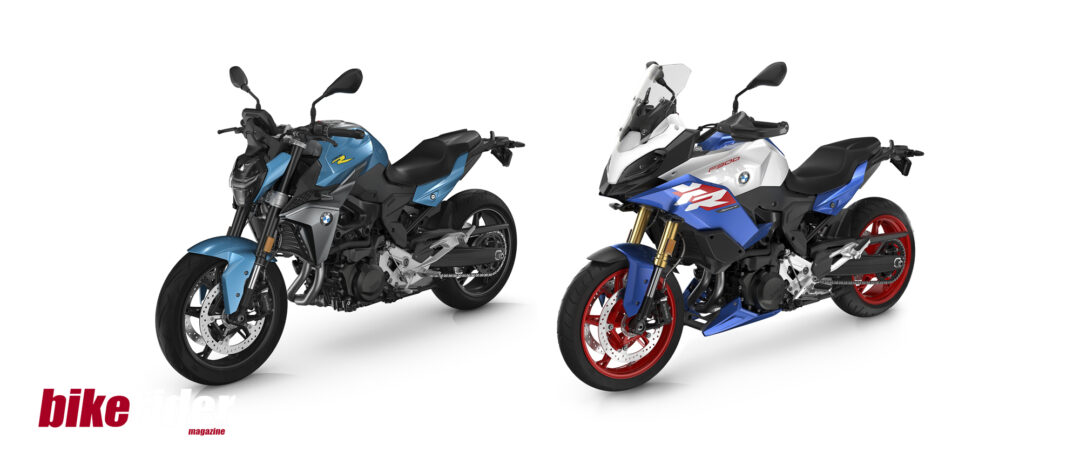
Quality At A Cost
BMW has been getting bolder with its styling in recent years, and the latest F900R and F900XR continue that trend. Both look sharp and ready for action in the new Sport livery – racing blue and light white with eye-catching red wheels – though this colour option adds £650 to the price tag.
As expected, build quality, finish, and overall attention to detail are excellent, especially given the base pricing: just under $18,000 for the F900R (you then add options) and $22,790 for the XR, which is competitive for the class. But don’t be fooled by those starting figures – once you add the Comfort Pack, Dynamic Pack, and a few extras like a centre stand, things climb quickly. And while you’ll be able to option what you like with the R model, BMW NZ are bringing the XR in pre-spec’d, seeing the retail price increased to $26,790 + ORC. Essentially, the importer knows from their sales history that barely any customers want a standard bike, so they pick the options they think most owners will go for, so the XR will get the Comfort Package (keyless ignition, prep for nav, cruise control, high windshield and case holders) and the Dynamic Package (adaptive headlights, quick shift and riding modes pro), tyre pressure control and a main stand.
Surprisingly, BMW used to run a one-make series that runs alongside the BSB Championship for the F900R and clearly, BMW has drawn some inspiration from it because the 2025 F900R now has bars that create a sportier stance and pegs set further back for a more aggressive riding position. They’re not extreme or uncomfortable, and the R remains easy to handle in town, but now hints strongly at track-day potential or spirited mountain riding.
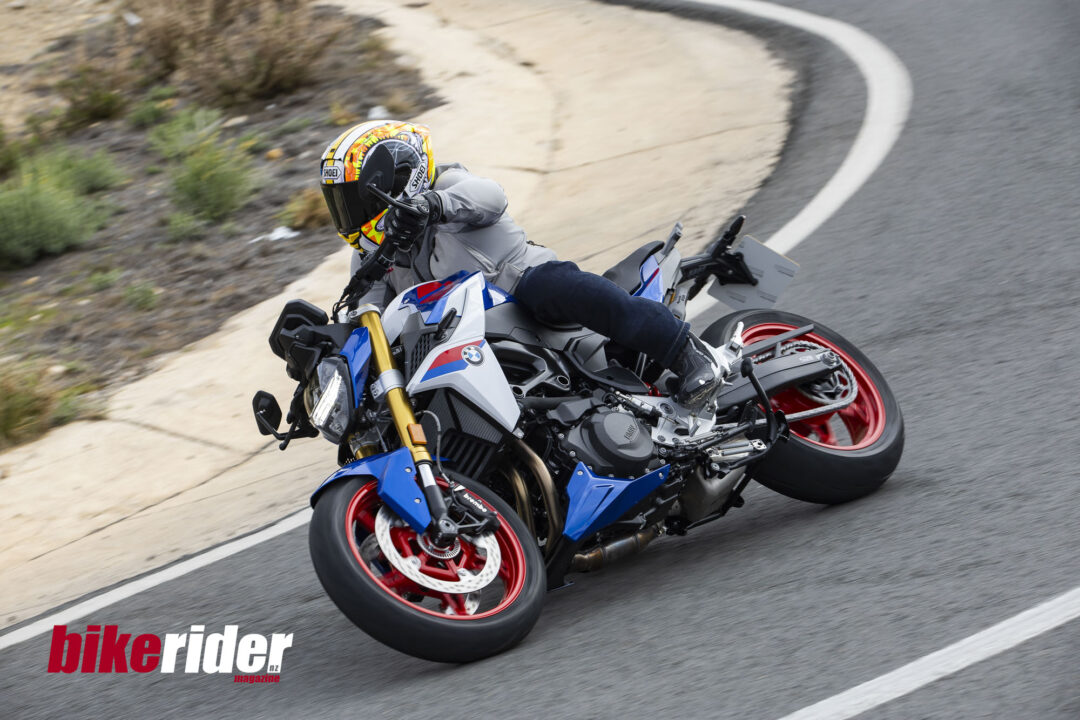
The TFT dash, switchgear, and signature navigation wheel remain unchanged and, in my opinion, continue to lead the class for clarity and usability. Optional cruise control and standard heated grips add a premium touch, contrasting nicely with the R’s cheeky, performance-focused character once you hit the twisties.
And what twisties they were – the switchback roads around Almería proved an ideal test ground for the lighter 2025 F900R. The revised riding position feels natural when attacking corners, even encouraging you to hang off. The steering is direct, the chassis stable, and with our test bike running sticky Pirelli Diablo Rosso Corsa IVs instead of the stock Maxxis tyres, confidence was sky-high as the R carved through corners with real pace.
Three riding modes – Rain, Road, and Dynamic – adjust throttle response and electronic aids, while bikes fitted with optional Dynamic ESA get semi-active rear suspension adjustment. The new 43mm USD forks are fully adjustable but manual only, so their settings stay the same across modes. It’s a curious mix – semi-active at the back, conventional up front – but it works well. Dynamic mode delivers a taut, focused ride, while Road and Rain soften things up for comfort.
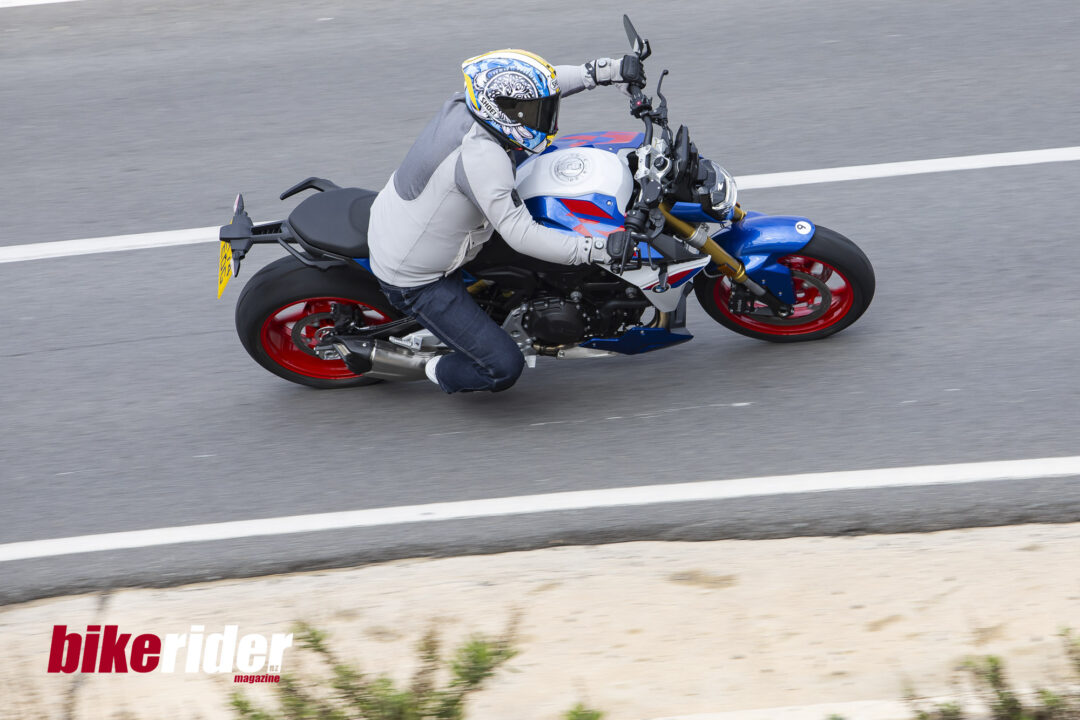
Track riders will appreciate that the new forks can now be dialed in for aggressive use and grippier tyres. Braking is equally confidence-inspiring, with ABS Pro (lean-sensitive) now standard, paired with strong Brembo calipers and 320mm discs. Stopping power is excellent, the ABS unobtrusive, and stability under hard braking is superb.
The familiar 895cc parallel twin remains mostly unchanged aside from Euro 5+ tweaks. It’s still all about midrange grunt, pulling hard past traffic and even hoisting the front wheel in lower gears with traction control off. It thrives in the midrange, yet revs willingly when pushed, especially with the slick optional Gear Shift Assist Pro handling quick upshifts. It sounds good too – even better with the Akrapovič option.
If there’s a weak spot, it’s the lack of high-end fireworks compared to its rivals. Yamaha’s MT-09 triple, KTM’s 990 Duke, and Triumph’s Street Triple 765 R all pack more top-end punch, making them more exciting in a track scenario. But on real roads, the BMW’s strong torque, planted handling, and new chassis tweaks make it an incredibly rewarding ride.
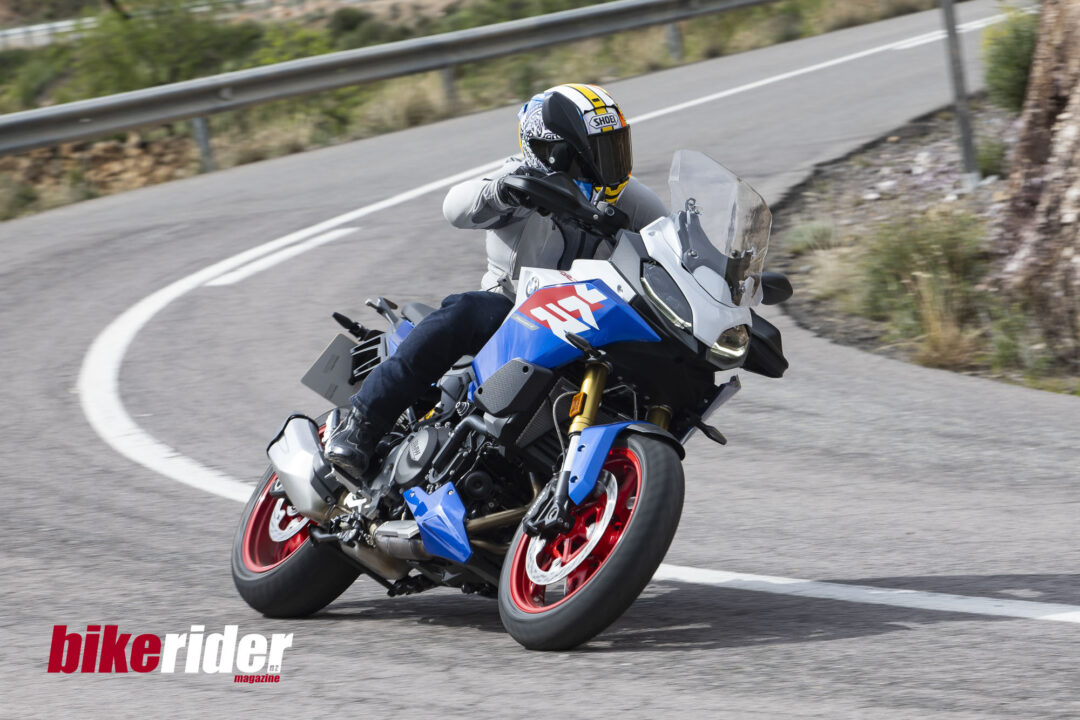
X-Factor
Switching to the XR (the model you’ll be able to find in NZ BMW dealers), that earlier criticism carries less weight. On a sports-tourer, top-end fireworks aren’t the priority; this bike is all about smooth power delivery in the low to midrange – eating up motorway miles, flowing along sweeping A-roads, or pulling hard up an Alpine pass. In that context, the motor feels lively, efficient, and more than strong enough.
The F900XR rides taller than the R thanks to its longer-travel suspension (170mm front, 172mm rear versus the R’s 135mm/142mm) and immediately feels bigger, more relaxed, and more purposeful. BMW has raised the manually adjustable screen by 30mm, and it’s easy to tweak with one hand while riding. Handguards now come standard, and with heated grips and optional cruise control, the XR is a seriously comfortable place to spend hours in the saddle. We didn’t clock up big motorway miles on this test, but early impressions were positive – I felt completely niggle-free. A brief rain shower showed the new screen does a decent job of deflecting water off my upper body (though taller riders might still prefer the bigger option NZ models will ship with).
Unlike the sportier R, the XR trades aggressive pegs for spacious, upright ergonomics that should suit a wide range of riders. Throw on BMW’s optional luggage, and I’d happily ride this Beemer all the way across Spain if I got the option.
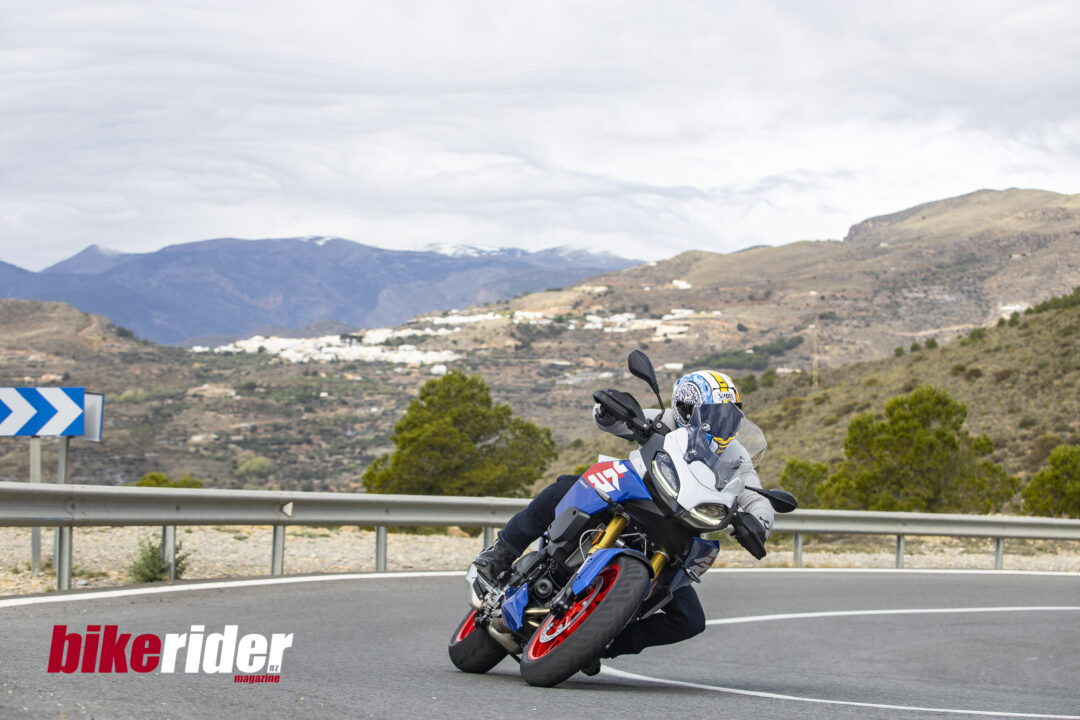
Like its naked sibling, the XR benefits from lighter 17-inch wheels and a lighter battery. The front forks are now fully adjustable, and if you add the optional ESA system, the rear shock becomes semi-active, with electronic preload adjustment for luggage and pillions. On the move, the XR feels long and planted, yet it surprises with its willingness to carve up mountain passes. Brakes are equally strong and predictable, just like on the R.
Of course, the XR isn’t as sharp or aggressive as the R, nor should it be. Its natural rivals are machines like Yamaha’s Tracer or Triumph’s new Tiger Sport 800. Judged in isolation, it’s tough to place the XR in such a competitive segment, but its quality build, class-leading dash, superb comfort, and torquey motor will win plenty of fans. That said, it does share the R’s slight lack of high-end punch compared to rivals. Fully loaded with luggage and a passenger, will 105hp still cut it – or will Yamaha’s 117hp and Triumph’s 113hp tempt power-hungry riders away?
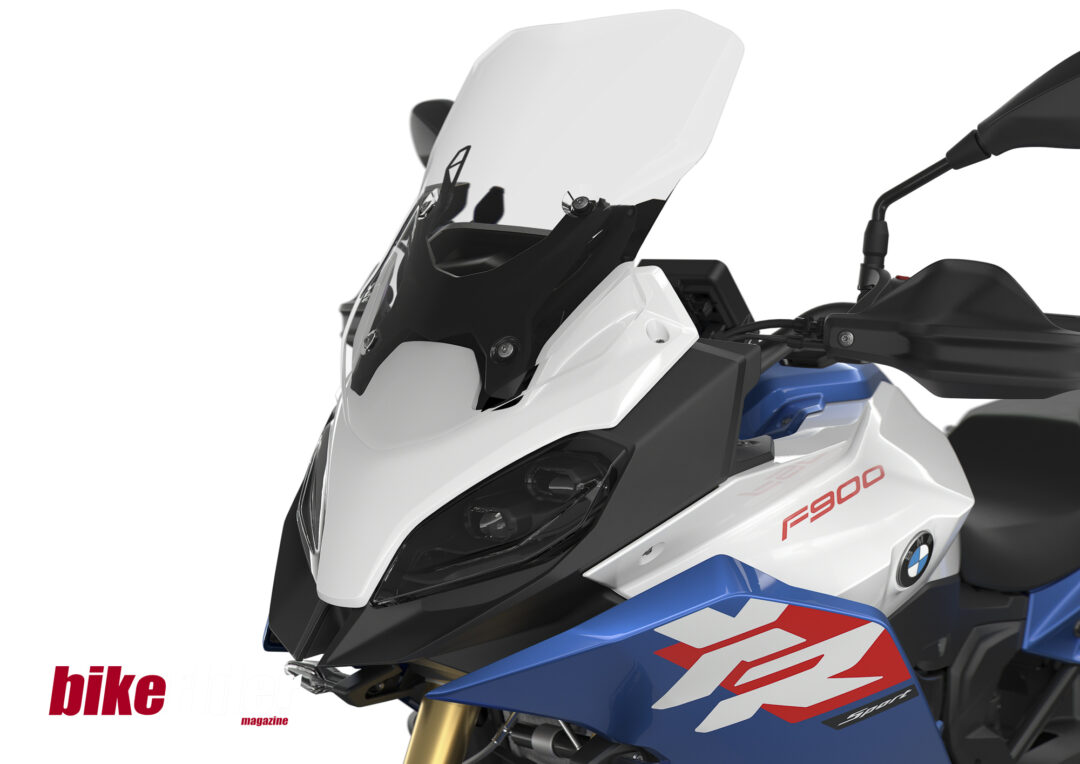
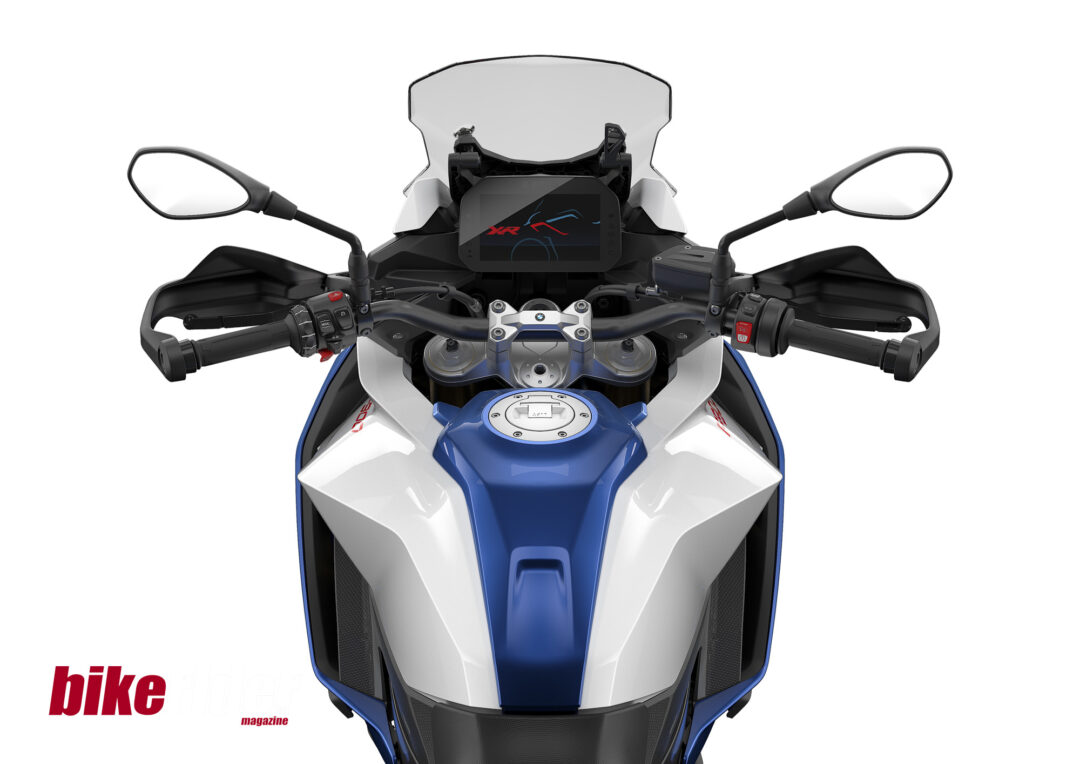
VERDICT
BMW has not reinvented the wheel with the F900R and F900XR, but simply tweaked each bike to make it competitive as the competition grows stronger. With lower bars and higher pegs, the R feels much sportier than before. It’s shed some weight, runs less unsprung weight thanks to lighter wheels and now a fully adjustable front fork gives more versatility should you want to soften the ride or take the R to the track. The new bold colours look great in the flesh and the styling tweaks make it easily identifiable as the 2025 bike.
The XR isn’t a drastic step forward either, but BMW has made its middle-weight sports-tourer more appealing with a higher basic specification, a taller screen and hand guards as standard. Like the R, its TFT dash, switchgear, build quality and overall level of finish are high while lighter wheels and adjustable forks also sharpen the XR’s handling. With NZ models pre-optioned, the price puts the XR closer to the Yamaha Tracer and well over the Triumph Tiger Sport 800. And while the XR might be a little down on top-end power, is that really a concern for riding in NZ where a decent mid-range is going to make a ride much more enjoyable. I’d suggest a test ride is going to be the only way you’re going to be able to tell.
BMW F900R & F900XR GALLERY
Specifications
BMW F900R $19,990 (Order only + options) & F900XR $26,790 (Comfort + Dynamic package)
ENGINE
Capacity 895cc
Type Water-cooled, 4v per cylinder four-stroke, 2-cylinder
Bore x Stroke 86×77
Compression ratio 13.1:1
Electronics Electronic intake pipe injection / digital engine management system: BMS-X with throttle-by-wire
Transmission Six-speed Quick Shift up/down optional
Clutch Multiplate clutch in oil bath, anti-hopping clutch, mechanically operated
Power 77kw/105hp @ 8,500rpm (claimed)
Torque 93Nm/69 lb-ft @ 6,750 rpm (claimed)
Top speed 225km/h (est)
Fuel consumption 4.2l/100km
ELECTRONICS
Type Bosch
Rider aids: Lean sensitive ABS and TC
Rider Modes: Rain, Road and Dynamic
Frame Bridge-type, steel shell construction
Rake 26
Trail 114mm / (105mm XR)
Wheelbase 1514mm/(1523mm (XR)
SUSPENSION
Front 43mm, USD, fully adjustable,135mm (170mm XR) travel
Rear Single rear shock, rebound and preload (optional ESA) 120mm (142mm XR) travel.
WHEELS & BRAKES
Wheels Cast aluminium
Front 3.5 x 17
Rear 5.5 x 17
Tyres Pirelli Diablo Rosso IV/Maxxis (Continental Road 4/Michelin Road 5)
Front 120/70 X 17
Rear 180/55 x17
Brakes ABS Pro
Front: 2 x 320mm discs, radially mounted Brembo caliper
Rear 265mm disc, single-piston caliper
DIMENSIONS
Weight 208kg wet /199kg dry. (222kg/206kg dry XR)
Seat height 815mm (820mm XR)
Width 809mm (920mmXR)
Height 1130mm (1416mm XR)
Length 2140mm (2160mm XR)
Fuel capacity 13l (15.5l)
SERVICING & WARRANTY
Servicing 10,000km
Warranty 36 months unlimited mileage country dependant
Colour options: Snapper Rocks Blue/ Triple Black/ Racing Blue/Lightwhite. (Racing Red, Triple Black, Lightwhite/Racing Blue)
Contact www.bmw-motorrad.co.nz

